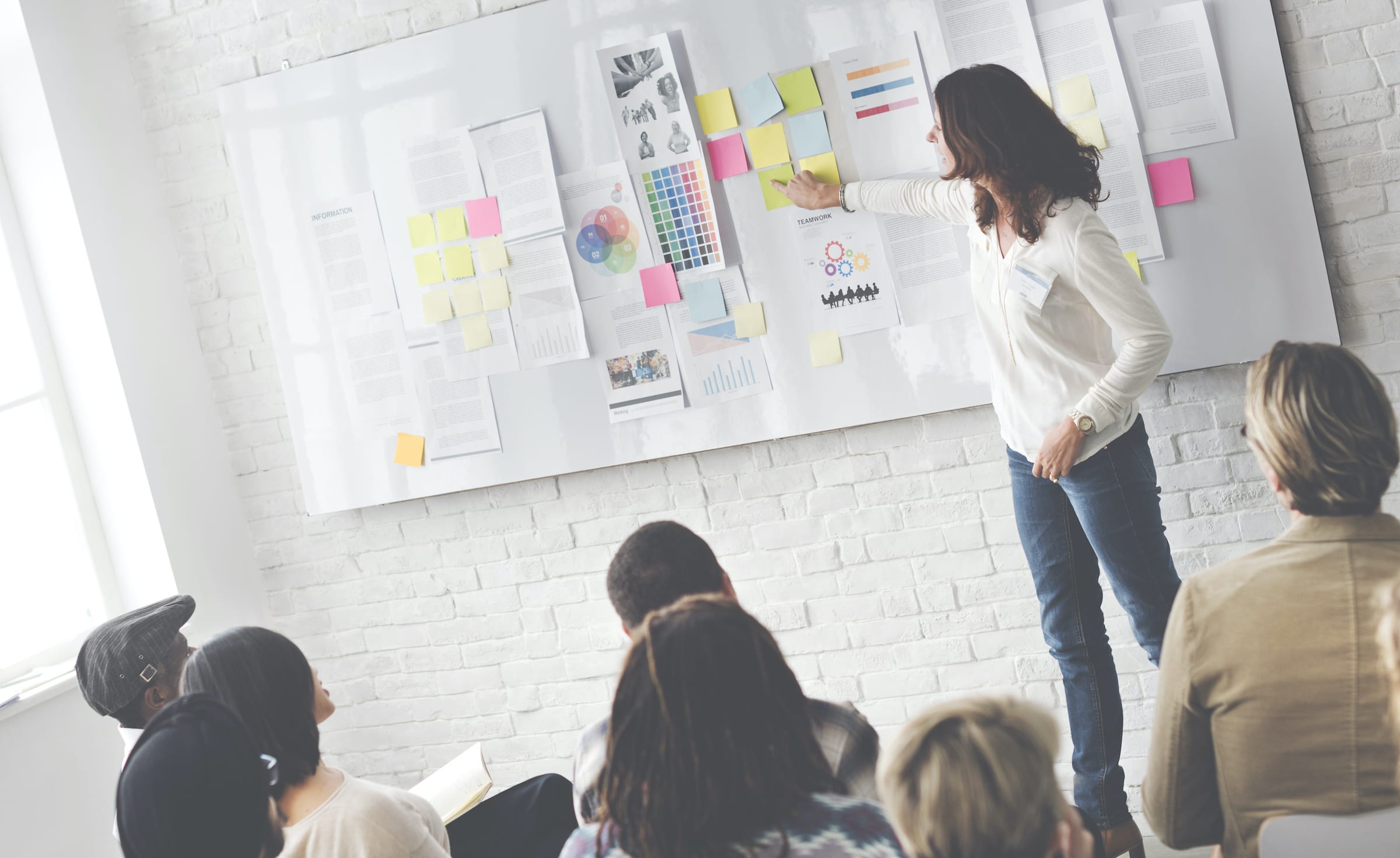“Design is messy before it is meaningful, chaotic before balanced, and filled with failure along the way.”
Over ten years ago, Nick Campbell summed up the design process as “Move stuff around until it doesn’t look like sh*t.” Of course it’s more complicated than that, but he had a point. Design is messy before it is meaningful, chaotic before balanced, and filled with failure along the way. There are a plethora of things that can kill the creative spirit and force designers to look for safe solutions, from tight timelines to inadequate support from leadership. We should give designers room to explore, support and guidance, and a way to recover from failure. Here are three ways to help you build a culture of creative exploration.
1. Create a Safe Environment
A creative culture needs a supportive, nurturing, and safe environment from which to flourish. This can only happen when teams are free to explore bold ideas without fear of ridicule or punishment. One large client I worked with had created an environment of fear and intimidation, where failure was met with scorn and greater measures of control. The team couldn’t even create a new icon without it going through an approval process. This process made the design team intimidated to try new things, explore new ideas, or pursue innovations that would meet or exceed the client’s objectives. The client had suppressed the very thing that would improve outcomes for their users: creativity.
“The design team is no place for egos or UX heroes. Making great products is a team sport.”
As a design leader, your job is to protect the team and give them opportunities to explore. However, the team itself can become a toxic environment when ideas are met with contempt, subjectivity or defensiveness. The team environment needs to be a safe space for new ideas to receive constructive feedback. The design team is no place for egos or UX heroes. Making great products is a team sport. Like any good relationship, it requires safe and honest communication for each member to learn, grow, and be successful. As an individual contributor and member of a design team, it’s your job to be supportive, objective, and constructive in your feedback and collaboration. It’s about the right solution, not your solution.
2. Encourage Exploration
In his 2010 TED Talk, Matt Ridley, author of “How Innovation Works,” spoke about how ideas have sex with each other, which gives birth to better ideas. Good communication and collaboration will help exponentially grow ideas and better solutions. When individuals and teams are encouraged and have the freedom to explore and take bold steps, the results can often lead to true innovation. While most grand ideas may not pan out, the exploratory process builds creative muscle over time, strengthening the individual and the team.
There are three ways to approach a solution: automate, iterate, or innovate. However, innovation is the mother of all solutions, and the rare ‘diamond’ we all seek. We strive to transform the process or thinking, shifting user paradigms in new and better directions. This is only possible if teams are given the room to explore, the support to walk on the edge of possibility, and are encouraged to be bold, daring and even risky. Teams need to know that not only is this acceptable, but that they are supported. It’s not to say we should allow reckless abandon without having a fallback or built-in safety net. We are still building applications that serve business objectives and goals. A parachute is always required.
3. Build-in Safety Nets
Winston Churchill famously said, “Success is not final, failure is not fatal: it is the courage to continue that counts.” This is so apropos to UX design, as you never stop learning and improving, failure simply moves you toward success, and knowing the first two points are fundamental truths of the design process allows us to confidently move forward irrespective of success or failure. Teams and individual team members will fail, so help them fail gracefully. Help them to build contingencies into their exploration, or conditional logic from which to recover (i.e. if this fails, then we fall back on X, else…). When possible, pad timelines (or capacity) to give room for exploration and recovery if needed. Even SAFe (Scaled Agile Framework), for all of its shortcomings, incorporates the notion of continuous exploration and uses exploratory enablers for research, prototyping, and proofs of concept.
“Teams and individual team members will fail, so help them fail gracefully.”
Finally, it is important to educate product team members, leadership and/or the client on the value of exploration. Helping them see the value of the design process will go a long way in gaining their support of exploration, and more importantly, understanding if it fails.
written by Shane Close


